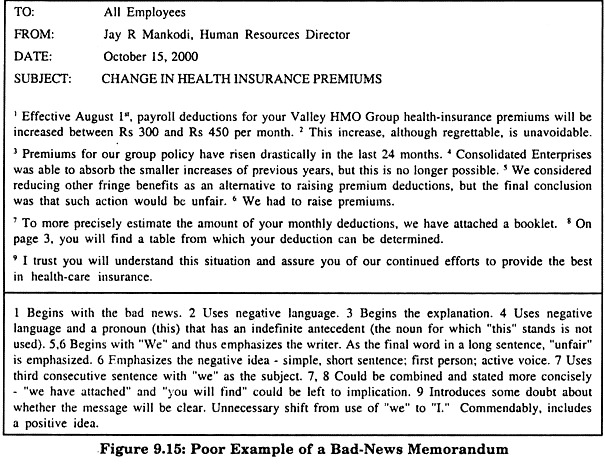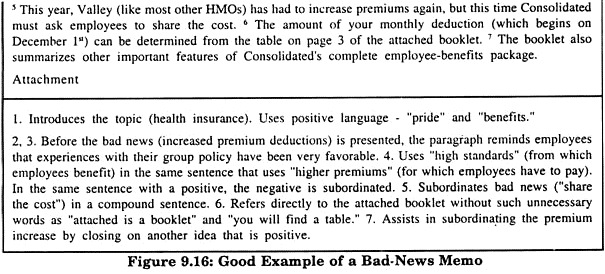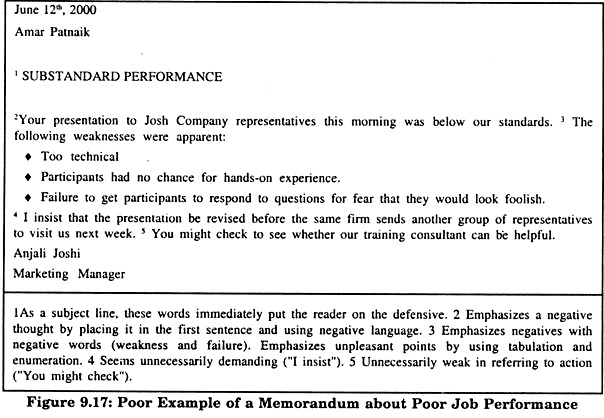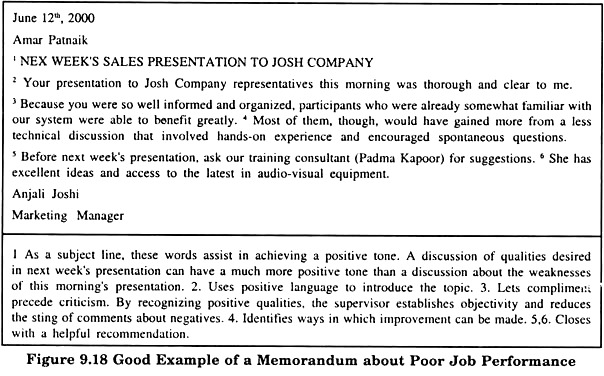Memos Giving Bad News!
Good-news memos or memos addressed to an audience receptive to our ideas are relatively easy to write. Such memos can be written deductively in a fairly straightforward manner. However, memos that convey bad news need to be written inductively, with a positive tone. But bear in mind that being inductive is not synonymous with being ambiguous. The writer has to convey the bad news inductively and clearly.
The memo in Figure 9.15 was written by the personnel director to all employees to communicate a change in their insurance premiums.
This memo has many obvious drawbacks. The deductive style and negative tone and word choice would antagonize the employees. Now read the revised version in Figure 9.16. This improved version is written inductively. It shows consideration for the audience’s feelings by beginning with the explanation and leading in to the bad news. The language is also more concise and positive.
Very often supervisors have to give written feedback to their employees regarding the quality of their work. If the employee’s work is not up to the mark, the supervisor has to tactfully inform and guide the employee, not demoralize him.
In the memo in Figure 9.17 a supervisor informs an employee that he (the employee) has done a poor job. Such a negative, deductively written memo would devastate and demotivate the employee. The revised version in Figure 9.18 would be more effective. This memo is not only inductive, it is also positive: it complements the reader and identifies ways in which the presentation could be improved.
ADVERTISEMENTS:
As discussed in Chapter 7, bad news need not always be written inductively. The writer has to assess his relationship with the reader before deciding which organizational approach to follow. Needless to say, whatever approach the writer follows, the memo (or letter) should always be worded tactfully.




